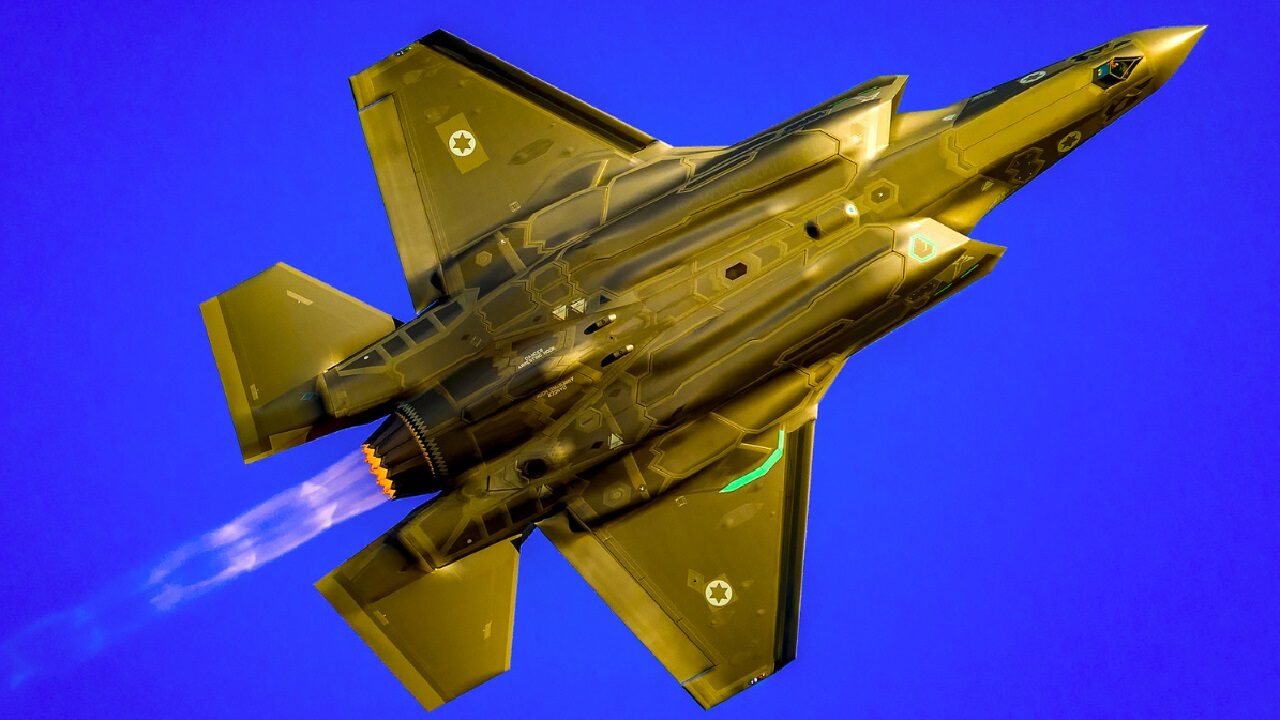F-35I Adir Is on the Tarmac: Following the December 15 crash of a Lockheed Martin F-35B at a United States Navy base in Texas, the Israeli Air Force (IAF) announced on Sunday that it had grounded eleven of its fighters. The aircraft would be checked for a similar issue that apparently led to the crash before any of the IAF fighters are returned to service.
(Subscribe to Our YouTube Channel Here. Check out More 19FortyFive Videos Here)
The Israeli Defense Forces (IDF) said that nearly a dozen F-35I “Adir” fighters would be inspected following recommendations by the F-35 Joint Program Office.
“From the findings and the information given, it was found that these planes require a dedicated inspection in order to rule out the possibility of a repeated malfunction in the Israeli array,” the IDF said via a statement, according to the Times of Israel.
Second Grounding
This is actually the second time this year that the IAF has been forced to briefly ground its fighters.
In August, the entire fleet of thirty-three jets underwent a detailed inspection and evaluation out of an abundance of caution. In fact, nearly the entire Lockheed Martin F-35 Lightning II fleet of aircraft around the world was also inspected after a faulty component was discovered, which could have prevented the pilot from being able to safely egress from the aircraft during an emergency.
The IAF teams, as well as other operators, had been provided equipment from Lockheed Martin to conduct inspections of the Martin-Baker ejection seats.
The matter was resolved within just a couple of weeks. It is expected the Israel Air Force’s F-35s will be inspected this week and returned to service by the New Year.
Israel’s F-35I Adir
Israel currently operates the advanced stealth jets in two squadrons, the 116th Lions of the South Squadron and the 140th Golden Eagle Squadron based at Nevatim Airbase. The IAF also has a third squadron used for training.
The State of Israel became the first foreign nation to select the F-35 through the U.S. government’s Foreign Military Sales process when a Letter of Agreement was signed more than a decade ago in October 2010.
On June 22, 2016, the IAF received its first F-35A at a ceremony at Lockheed Martin’s Fort Worth, Texas facilities.
The IAF’s F-35 is actually a special variant that was developed to address concerns that the Lightning II’s stealth capabilities could be partly overcome within a decade despite the 30- to the 40-year service life of the aircraft. Israel sought to utilize its own electronic warfare system (EWS), and while the U.S. had initially refused to allow such changes, it was eventually agreed that the IAF could integrate its own EWS, including sensors and countermeasures, on top of the U.S. systems.
Mighty One
In addition to the Israeli-specific software enhancements in the F-35, IAF pilots also utilize a locally-developed helmet-mounted display, and bespoke datalink functionality that is specific to the IDF, while other enhancements further improved the F-35’s already-potent data gathering and processing capabilities.
These various upgrades to the stealth aircraft were considered significant enough to warrant the ‘I’ designation, making the F-35I one of just a handful of formally acknowledged F-35 variants. The Israeli Air Force designated the F-35I with the name Adir, meaning “Mighty One” in Hebrew.
It was last month that the IAF received three additional Adir fighters, bringing the total of F-35s in the fleet to thirty-six.
Author Experience and Expertise: A Senior Editor for 19FortyFive, Peter Suciu is a Michigan-based writer. He has contributed to more than four dozen magazines, newspapers, and websites with over 3,200 published pieces over a twenty-year career in journalism. He regularly writes about military hardware, firearms history, cybersecurity, politics, and international affairs. Peter is also a Contributing Writer for Forbes and Clearance Jobs. You can follow him on Twitter: @PeterSuciu.

